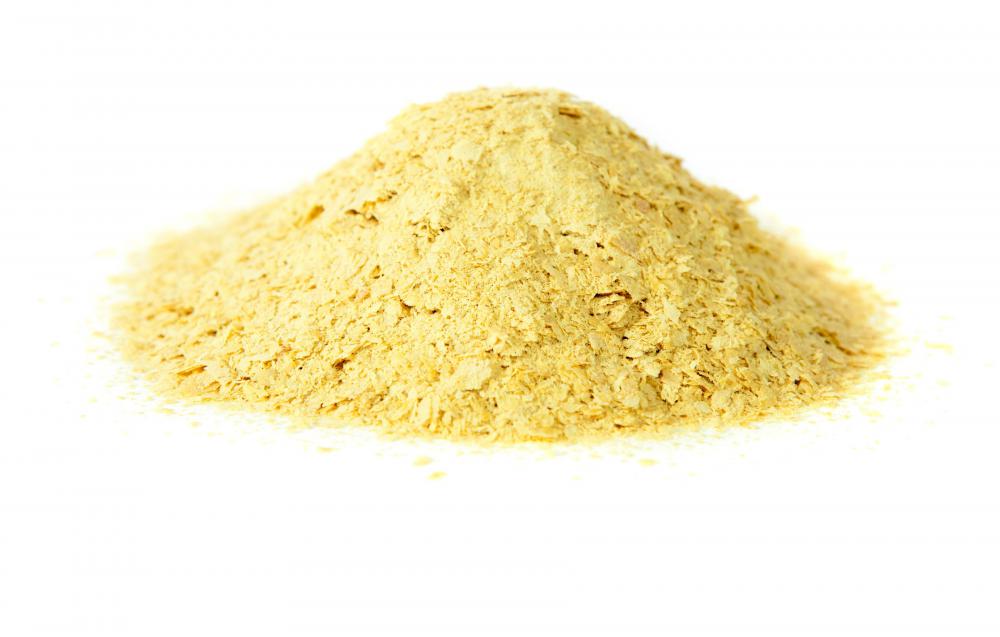At DelightedCooking, we're committed to delivering accurate, trustworthy information. Our expert-authored content is rigorously fact-checked and sourced from credible authorities. Discover how we uphold the highest standards in providing you with reliable knowledge.
What is Biga?
Biga is a type of starter used to make traditional Italian breads. In Italy, the term is used to refer to sourdough sponges, collectives of wild yeast, and other starters. If an Italian recipe includes this ingredient, cooks should consult the recipe to make sure that they are using the right type, since the term is so all-encompassing. When a biga is used, bread is lighter, with bigger holes and a more moist crumb. The result is a classic Italian country bread, a popular baked good in many parts of the world.
In some parts of Italy, the biga is known as “la madre,” or “the mother,” a reference to the idea that it is the mother of the bread. Making this starter is a type of pre-fermentation, promoting developing and maturation of the yeast. Since the yeast is more developed, the bread made with a biga takes longer to rise, but it also has a more complex and evolved flavor. As with many pre-fermentation processes, it takes practice to make.

A classic biga is made from the unsalted dough of the previous day's bread. The cook simply scoops a wedge of dough out before salting or sweetening it, and sets it aside tightly wrapped in a cool place overnight. Putting it under refrigeration will slow the development of the yeast, while a biga can mature in a warm place in around six hours. The next day, the cook uses it in a bread recipe, pulling another chunk of dough out to repeat the process. When this system is used, the biga will need to be periodically refreshed, as it is not collecting new yeasts and the colony can become weakened.

Other cooks make a large batch of dough intended for use as a biga. It starts with dissolving 0.5 teaspoon (about 1.5 grams) of yeast in 0.75 cup (118 ml) of water and allowing the mixture to sit until foaming before adding around 2.5 cups (85 grams) of flour. The dough is loosely kneaded, and it will be more dry and less elastic than regular bread dough. It can be left in a warm place to mature, refrigerated for up to three days, or frozen for up to three months.

Many Italian breads such as ciabatta are made with a biga base. As the starter rests, the yeasts inside multiply, and they also form complex flavors and aromas which enhance breads made with it. The flavor and texture of a biga-based bread is significantly different than an ordinary yeast bread, and some consumers appreciate the additional complexity.
AS FEATURED ON:
AS FEATURED ON:














Discussion Comments
If you're confused about what biga is, don't worry too much. You can just use the yeast they have at the supermarket in a pinch.
It probably won't taste as good as bread made with a traditional biga that's been prepared in an old fashioned way, but it will still rise the way you need it to.
Even if you do get a traditional biga you might want to consider occasionally adding a bit of supermarket yeast just to make sure the yeast organisms remain strong. I find they can go down in quality if there is no added yeast from outside sources for a while.
@bythewell - There are a few different things which require yeast and I know there are lots of traditions for keeping the yeast through the years. I was recently visiting Dublin and did the tour of the Guinness Factory and they showed us how the yeast used to make that famous brew is kept locked up in a safe because they think it is so unique.
The thing about it though, is that yeast can really be spread around indefinitely as long as you take care of it. So, if you have a friend or a local baker or someone who has a bread that you find delicious and they have some biga, you should be able to talk them into giving you some. It won't make any difference to them, although a baker might be less willing to part with it.
Really, you're buying his labor and skill rather than just the yeast, so he or she might be willing to part with the biga.
I love the idea of gathering yeast from the wild in order to start your own biga.
From what I've seen on cooking shows all you have to do is put out a bowl of warm water and flour to collect wild yeasts and start your own tradition. I know there are families who have passed down their biga for generations and I really love that idea.
Of course, you'd have to be careful not to contaminate your yeasts with bacteria or anything like that.
Post your comments